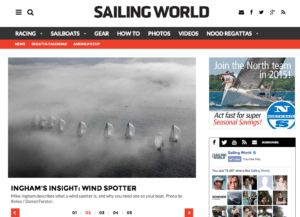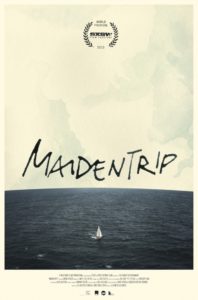
FBHerb2St
On a recent visit to the busy French harbor of Les Sables d’Olonne, the start and finish of the non-stop Vendee Globe solo around-the-world race, I was struck by the number of trim 40-footers that looked like miniature versions of the Open 60s sailed in the Vendee.
“Those are Pogo 40s,” said my boatbuilding friend who was showing me around. “The Open 40 class is really taking off over here.”
I left France having missed a chance to sail one of the new breed of 40-footers, which are becoming more and more prominent in the shorthanded events that are such a huge part of the French racing scene. As it turns out, though, I may not have to wait long to sail an Open 40 here in the U.S., particularly if a couple of American sailors have anything to say about it. That was made abundantly clear at the recently concluded Newport International Boat Show in Newport, R.I., where the new Akilaria Class 40 made its stateside debut.
Broad of beam, long of waterline, with a tall, carbon rig and an ample, workable cockpit, the Mark Lombard-designed Akilaria was a breed apart from the rows of production cruising boats that dominated the docks. “I don’t exactly know how to gauge what the demand will be for the boat,” said Joe Harris, shortly after inviting me aboard to have a look around. “But I do know it’s going to be a great boat for this growing group of double-handed sailors who want to race offshore but also want a boat they can cruise with their family.”
Harris, one of America’s best solo sailors-aboard his Open 50, Gryphon Solo, he took second in his class in the 2004 Transat Race and first in his division in the 2005 Transat Jacques Vabre-has a better perspective on the game than most. The same could be said of his partner in the Akilaria enterprise, Brian Harris (no relation to Joe), a Maine boatbuilder who’s played prominent shore-side roles in several high-profile races, including British singlehander Josh Hall’s Gartmore and Pindar campaigns.
Brian’s interest in the Open 40 scene was piqued when a client desiring to break into the class commissioned him to fly to France, research the options, and identify the best available boat. About 50 Open 40s have been built to a strict box rule that prohibits exotic hull materials and canting keels, and limits sail inventories to eight sails, only two of which can incorporate exotics. The idea is to keep the boats fun and reasonably priced, and avoid the sort of “arms race” that can negate either of those aims.
Brian looked at the Pogos and another production boat, the Jumbo, along with several one-offs and the Akilarias. The latter, he decided, offered the best combination of a solid build and a fast Lombard hull, and last winter his client purchased one and had it shipped to the Maine Yacht Center, in Portland, where Brian commissioned the boat. One thing led to another, and now he and Joe have become partners in a company called True North LLC, which will import the Akilaria line into the U.S. For more on the company, visit their website (www.akilaria.com).
“We’ll do all the commissioning, fitting out and customizing, and sea trials,” said Joe. “We can deliver the boat or you can pick it up in Maine. We’ll work out any kinks and if there’s any sort of problem, we’ll stand behind it.”
The spars and sprit on the Akilaria are carbon, the hull and deck a straightforward sandwich construction utilizing SCRIMP resin-infused technology. The all-up displacement for the boat, which draws 10-feet, is a mere 10,000 pounds, though the boat also employs 1,600 pounds of movable water ballast, or the equivalent of eight big lads on the rail. “Powered up in a breeze, with the ballast, she’ll go, with both height and speed,” said Joe. “As with most of these open hulls, the weakness may be upwind in light air. But I think the boat’s really going to light up downwind.”
It’ll be interesting to see where the class goes in the U.S., where it’s just beginning to gain traction. A new Rodger Martin-designed Open 40 is due to be splashed in Rhode Island this month, there are several Owen-Clarke 40s now in New England, and the Harris partners have their fingers crossed, obviously, about the Alikaria. With a bit of luck, there may be six or seven boats, at least, up and sailing by next summer. The concept is certainly sensible and attractive to many racing sailors who are interested in good offshore competition but don’t want the cost or hassle of a fully crewed program.
Plus, next September, the Portimao Global Ocean Race, a round-the-world event setting out from Portugal with a dedicated double-handed class, is on the docket for anyone interested in the ultimate offshore adventure.
“It’s only a half-baked, as opposed to a fully baked idea,” laughed Joe, “but I’m thinking of selling my Open 50 and getting one of these for the Portimao race. I think the boat is Southern Ocean ready.”
That, surely, would be a helluva ride.









